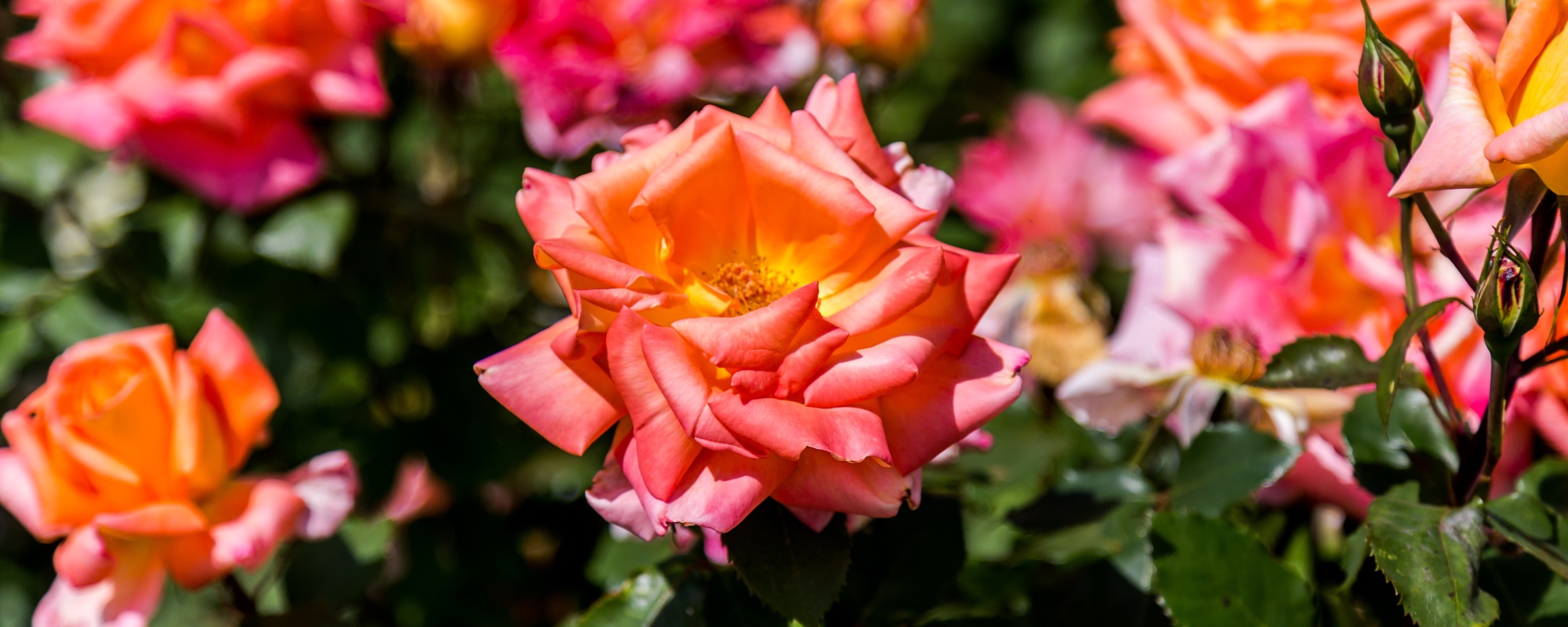Autumn in the rose garden is a time to enjoy the roses, to assess their performance, to do a few chores, and to plan for the next season.
In autumn roses bear the fruit of our labor. We planted, pruned, sprayed, fertilized, watered, deadheaded and trained. Now we deserve to meander in our rose garden while enjoying the cooler mornings. During this season rose flower color is more intense and the depth of color lasts longer; flower form also lasts longer.
Autumn is the time to assess how our roses performed. Which plants thrived, which were stunted, which bloomed poorly, and which were ravaged by disease and insects? The following questions will often lead to the answer: location… location… location. Did the roses receive a minimum of six hours of sunlight? If not, consider planting more shade tolerant roses. Or move the roses to a sunny area; if needed, plant them in containers. Was the rose genetically weak? If so, replace it, preferably with a rose recommended for our region. Does the rose garden soil have the right composition – 1/3 clay, 1/3 coarse sand and 1/3 organic material? Does the soil drain properly? Was the plant pruned correctly? Is there a two to three inch layer of mulch on the rose bed? Did the roses receive four gallons of water each week if there was not at least one inch of rain? Was fungicide sprayed on schedule? Was a contact fungicide sprayed with a systemic fungicide? Were two systemic fungicides alternated, each with a different mode of action? Was a combination of both organic and chemical fertilizers used? Is the pH of the soil about 6.5? Normal decomposition of organic material, sulfate found in most nitrogen based fertilizers, Epsom salts (MgSO4) and gypsum (CaSO4) acidify the soil. Were good sanitation techniques maintained by removing fungal infected leaves from the bush and the ground? Was there diligent insect control?
Autumn is a good time to obtain a soil test to determine the level of macro and micro nutrients, but most importantly to check the pH. Roses are not able to utilize nutrients if the soil is too acidic or too alkaline. Use dolomitic lime to raise the pH. It takes many months to change the soil pH. Autumn is the best time to condition the soil with organics since it takes many months for organic material to breakdown and turn into usable nutrients. Alfalfa meal (3-1-2) is excellent; it contains triacontanol, a growth regulator. Work in organic material such as compost to improve soil tilth. Clean up the leaves infected with blackspot which have fallen to the ground, pick those off the bush, and then add a two to three inch layer of mulch. Tree bark mulch is thought to prevent nematodes in addition to controlling weed growth, conserving water, limiting ground temperature fluctuations, and eventually decomposing.
Check the soil water drainage quality with a coffee can. Cut out the bottom of the can and push the can about one inch deep into the soil. Fill the can with water. It should completely drain within one hour.
Fertilize for the last time each year at the end of September with a water soluble concentrate. Continue to spray fungicide through October. In November spray Lime-Sulfur. In December spray dormant oil. Continue to water weekly, since the fall is usually dry.
Walk around the garden to plan a site for a new rose bed or think of how to improve the landscape design by adding roses. Develop a plan to order bare- root roses.

